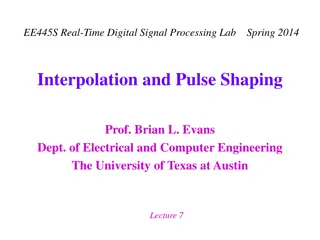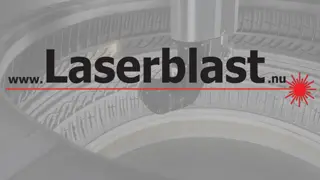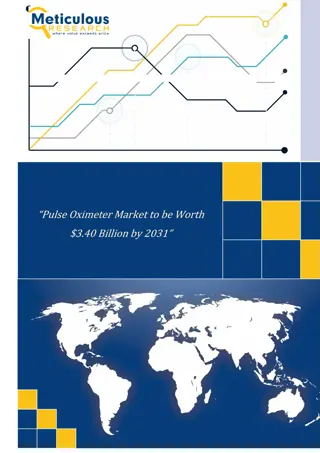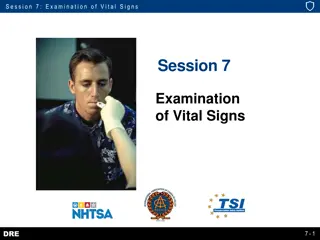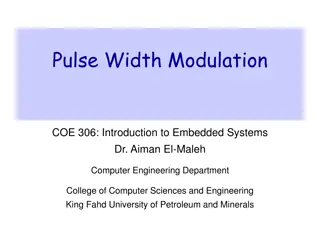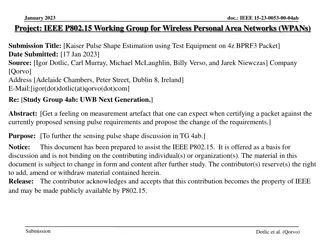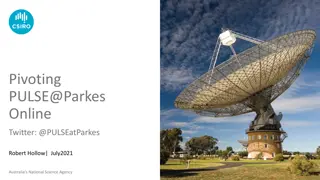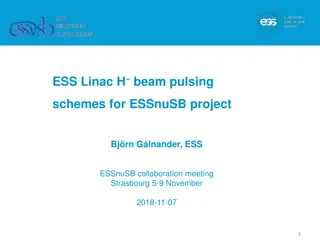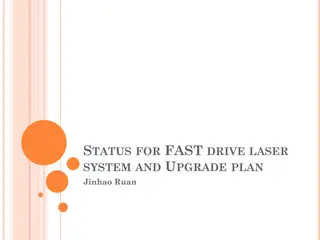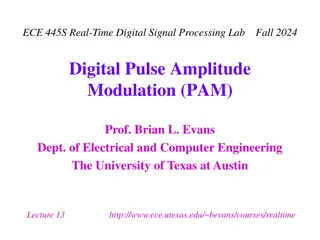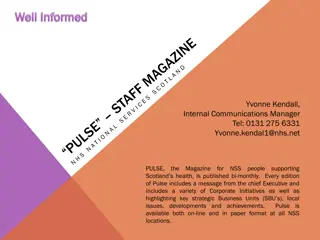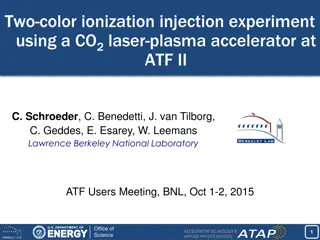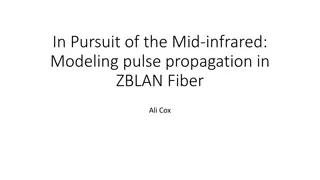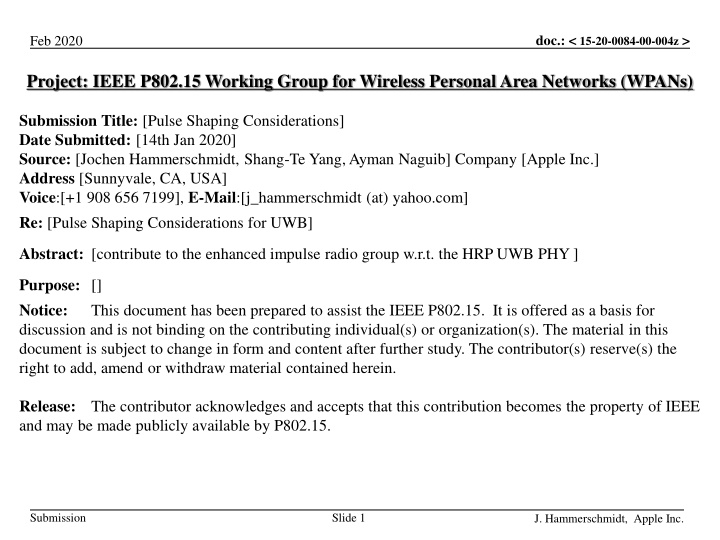
Pulse Shaping Considerations for IEEE 802.15 UWB
Explore pulse shaping recommendations for UWB in IEEE 802.15, focusing on potential performance impacts and the need for clearer guidelines to enhance interop scenarios. The document presents insights from Apple Inc. experts and proposes specific pulse shaping outlines for consideration.
Download Presentation

Please find below an Image/Link to download the presentation.
The content on the website is provided AS IS for your information and personal use only. It may not be sold, licensed, or shared on other websites without obtaining consent from the author. If you encounter any issues during the download, it is possible that the publisher has removed the file from their server.
You are allowed to download the files provided on this website for personal or commercial use, subject to the condition that they are used lawfully. All files are the property of their respective owners.
The content on the website is provided AS IS for your information and personal use only. It may not be sold, licensed, or shared on other websites without obtaining consent from the author.
E N D
Presentation Transcript
doc.: < 15-20-0084-00-004z > Feb 2020 Project: IEEE P802.15 Working Group for Wireless Personal Area Networks (WPANs) Submission Title: [Pulse Shaping Considerations] Date Submitted: [14th Jan 2020] Source: [Jochen Hammerschmidt, Shang-Te Yang, Ayman Naguib] Company [Apple Inc.] Address [Sunnyvale, CA, USA] Voice:[+1 908 656 7199], E-Mail:[j_hammerschmidt (at) yahoo.com] Re: [Pulse Shaping Considerations for UWB] Abstract: [contribute to the enhanced impulse radio group w.r.t. the HRP UWB PHY ] Purpose: [] Notice: discussion and is not binding on the contributing individual(s) or organization(s). The material in this document is subject to change in form and content after further study. The contributor(s) reserve(s) the right to add, amend or withdraw material contained herein. This document has been prepared to assist the IEEE P802.15. It is offered as a basis for Release: The contributor acknowledges and accepts that this contribution becomes the property of IEEE and may be made publicly available by P802.15. Submission Slide 1 J. Hammerschmidt, Apple Inc.
doc.: < 15-20-0084-00-004z > Feb 2020 Pulse Shaping in 802.15.4 UWB 802.15.4a HRP (e.g., 2015) has pulse shaping recommendations They refer to convolution with a SRRC reference pulse and certain metrics to be met in the resulting waveform Those metrics are fairly loose and leave a lot of room for interpretation and, therefore, potentially degraded performance in interop scenarios WG 802.15.4z took another stab at this topic Previous TG4z submissions commented on this or suggested to address this with concrete pulse shaping guidelines but a broad-based consensus hasn t been found yet Current pulse shaping specification in Draft 4z is still a partial, vague recommendation While in the past, technology limitations may have been aligned with a less rigorous language, 2020 technology has more degrees of freedom to meet more rigorously defined pulse shapes and pave the way for high performance interop & UWB ecosystem IEEE 802.15 seems to be the right place to define this as part of the UWB Phy definitions Submission Slide 2 J. Hammerschmidt, Apple Inc.
doc.: < 15-20-0084-00-004z > Feb 2020 Considerations There are HRP Impulse Radio implementations already in the field, which helps seed the common ecosystem These use symmetrical srrc pulses (similar to 4a reference pulse) and precursor free pulses Symmetrical and precursor free pulses each have certain pros and cons with implementation and waveform dependent implications; these include Power Amplifier utilization and PAPR, country dependent regulatory rules, transmitter and receiver processing requirements, BPRF vs. HPRF etc. While Rx configurability may be more accessible (DSP-centric first-path extraction), transmitters may have less flexibility in some implementations Submission Slide 3 J. Hammerschmidt, Apple Inc.
doc.: < 15-20-0084-00-004z > Feb 2020 Pulse Shaping Proposal Outline Define two eligible Pulse Shapes Pulse PA: Precursor-free Pulse (Details open for discussion) Pulse PB: Symmetrical SRRC Definition is provided in 4z text by means of explicit amplitude coefficients During connection setup (e.g., OOB) a device announces its preferred Tx pulse shape, PA or PB, and the associated Receiver shall honor this request; this is similar to BPRF vs. HPRF or other signaling properties. Alternatively this announcement step can be skipped in the case of fixed deployments where all devices are known to each other a-priori An additional flag (precise_pulse = 0/1) indicates whether the pulse shape is adhered to strictly (1) or not (0); 0 is default, 1 (=precise) is optional This helps Rx to make a more or less precise interpretation of the incoming pulse What is precise or not can be defined via EVM or max deviation metrics (and may be deferred to bodies outside of IEEE) Submission Slide 4 J. Hammerschmidt, Apple Inc.






